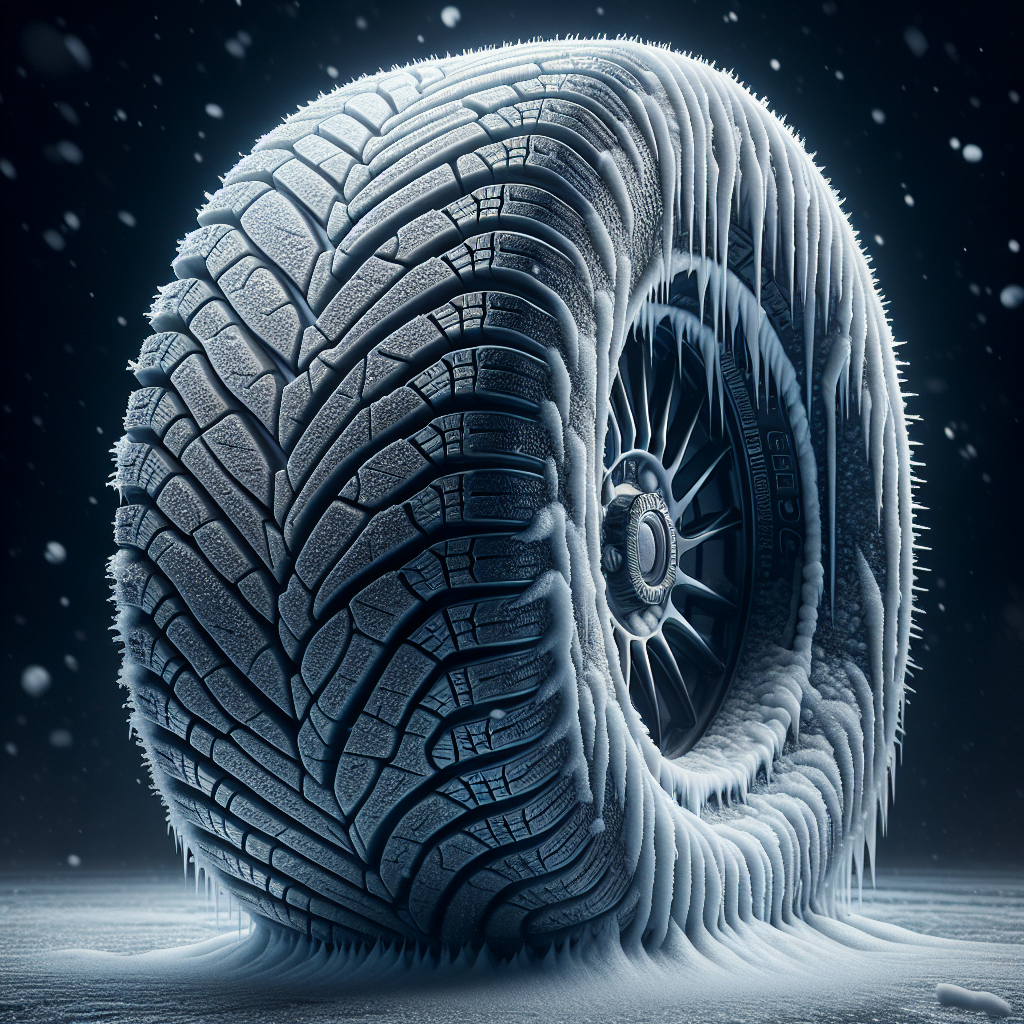If you’re gearing up for the chilly winter months and want to ensure your drive is safe and secure, it’s essential to understand the importance of siped winter tires. These specialized tires are designed with tiny grooves, known as sipes, that greatly enhance traction on slippery surfaces. By providing additional traction on icy and snowy roads, siped winter tires allow you to navigate hazardous conditions with confidence. In this article, explore the fascinating world of siped winter tires, learn about their benefits, and discover how they can significantly improve your driving experience during the winter season.

Overview of Siped Winter Tires
Definition of Siped Winter Tires
Siped winter tires are specifically designed tires that have small slits, called sipes, cut into the tread blocks. These sipes provide additional biting edges, which enhance traction and grip on snowy and icy surfaces. The siping process involves making precise cuts in the tire tread to create small channels that facilitate better performance in winter conditions.
History of Siped Winter Tires
The concept of siping tires was introduced by John F. Sipe in the 1920s. He realized that by creating small cuts or sipes in the tire tread, the grip and traction on wet and slippery surfaces could be significantly improved. Siping quickly gained popularity in regions with harsh winter climates, where the need for increased traction led to the development of siped winter tires. Over the years, advancements in tire technology have further refined the siping process, making it an essential feature in modern winter tires.
Why Siped Winter Tires?
Importance of Traction in Winter
When it comes to winter driving, traction is of utmost importance. The ability of your tires to maintain contact with the road surface determines how well your vehicle accelerates, brakes, and handles in snowy and icy conditions. Siped winter tires play a crucial role in enhancing traction, ensuring a safer and more controlled driving experience.
Challenges Driving in Winter Conditions
Winter conditions pose numerous challenges for drivers. Snow and ice on the roads reduce tire grip and make it harder to maintain control of the vehicle. Braking distances are increased, and the risk of skidding or sliding becomes more prevalent. Siped winter tires address these challenges by maximizing traction and minimizing the negative effects of slippery surfaces.
Understanding Tread Patterns
Different Types of Tread Patterns
Tread patterns on tires can vary significantly, and each design serves a specific purpose. In the context of winter tires, there are three main types of tread patterns: directional, asymmetrical, and symmetrical. Each pattern is tailored to provide optimal performance in different weather conditions and on various road surfaces.
Rationale Behind Tread Design
The tread design of a tire influences its performance characteristics. Siped winter tires are designed to have a greater number of smaller tread blocks compared to standard tires. These smaller blocks create more biting edges on the tire surface, enhancing grip and traction on snowy and icy roads. The sipes cut into these tread blocks further increase the number of biting edges, improving overall tire performance in winter conditions.
How Siped Winter Tires Work
What are Tire Sipes?
Tire sipes are small, thin slits that are strategically cut into the tire tread. These evenly spaced cuts allow the tread blocks to flex independently, providing additional biting edges as the tire interacts with the road surface. By increasing the number of sipes, tire manufacturers can tailor the grip and traction characteristics of the tire to specific winter driving conditions.
Siping Process
Siping is a precise manufacturing process performed on winter tires. It involves cutting thin grooves or sipes into the tire tread using specialized machinery. The sipes are strategically placed across the tread pattern to optimize performance in icy and snowy conditions. The depth and spacing of the sipes depend on various factors, such as the intended use of the tire and the specific winter conditions it is designed to handle.
Benefits of Siped Tires
The siping process provides several benefits for winter tires. By incorporating sipes into the tire design, manufacturers can significantly improve traction on snowy and icy surfaces. Siped tires offer increased stability, better handling, and enhanced braking performance in winter conditions. These tires also excel at evacuating water, reducing the risk of hydroplaning and improving overall wet weather performance.

Improved Grip on Snow and Ice
Increased Number of Biting Edges
One of the key advantages of siped winter tires is the increased number of biting edges they offer. The sipes cut into the tire tread create numerous tiny edges that dig into the snow and ice, improving grip and traction. These additional biting edges allow the tire to effectively grip the road surface, providing better control and maneuverability in winter conditions.
Enhanced Flexibility
The sipes in winter tires also contribute to their enhanced flexibility. As the tread blocks flex and deform, the sipes open up, allowing additional edges to come into contact with the road. This flexibility enables the tire to conform to the uneven surfaces of snow and ice, maximizing contact and improving traction. The increased flexibility of siped winter tires further enhances their ability to adapt to changing road conditions during winter driving.
Water Evacuation
Siped winter tires excel at evacuating water from the road surface. The sipes act as channels, efficiently dispersing water from beneath the tire. This water evacuation capability reduces the risk of hydroplaning, where the tire loses contact with the road due to a layer of water. By effectively displacing water, siped tires maintain better contact with the road, ensuring improved grip and traction even in wet winter conditions.
Optimized Performance in Wet Conditions
Enhanced Traction on Wet Roads
While siped winter tires are primarily designed for snowy and icy conditions, they also provide excellent performance on wet roads. The sipes in the tire tread help to enhance traction by biting into the surface, reducing the risk of skidding or sliding even in wet conditions. The improved traction allows for better acceleration, braking, and overall control of the vehicle, ensuring a safer driving experience in the wet winter months.
Reduced Risk of Hydroplaning
The ability of siped winter tires to evacuate water from the road surface significantly reduces the risk of hydroplaning. Hydroplaning occurs when a layer of water builds up between the tire and the road, causing the tire to lose contact and resulting in a loss of control. The sipes in winter tires efficiently disperse the water, preventing hydroplaning and maintaining optimal traction on wet winter roads.

Reduced Braking Distance
Improved Friction and Control
Siped winter tires offer improved friction and control, leading to reduced braking distances on snowy and icy surfaces. The extra biting edges provided by the sipes allow the tire to dig into the surface, creating more friction and enabling quicker deceleration. With reduced braking distances, siped winter tires help drivers maintain better control of their vehicles, minimizing the risk of accidents in winter conditions.
Enhanced Stopping Power
The combination of increased traction, improved friction, and reduced braking distances results in enhanced stopping power for vehicles equipped with siped winter tires. These tires provide the necessary grip to bring the vehicle to a halt quickly and safely, even on slippery roads. The improved stopping power ensures that drivers have better responsiveness and control, reducing the likelihood of collisions during braking maneuvers.
Enhanced Stability and Handling
Improved Cornering Ability
siped winter tires improve cornering ability in winter conditions. The additional biting edges created by the sipes allow the tire to maintain better contact with the road when making turns. This increased grip enhances stability while cornering, reducing the risk of skidding or losing control. With improved cornering ability, drivers can navigate icy and snowy roads with increased confidence and safety.
Better Control in Slushy Conditions
Slushy conditions pose a unique challenge for drivers, with a combination of snow, ice, and water creating unpredictable road surfaces. Siped winter tires excel in slushy conditions due to their enhanced grip and traction capabilities. The sipes effectively cut through the slush, providing improved control and stability as the tires contact the underlying surface. This enhanced control allows drivers to navigate slushy conditions with greater ease and reduced risk.

Quieter and Smoother Ride
Reduced Tire Noise
Siped winter tires are designed to provide a quieter and smoother ride compared to traditional winter tires. The sipes help to break up the air trapped between the tire and the road, reducing the noise generated during driving. This noise reduction contributes to a more comfortable and enjoyable driving experience, particularly on long winter journeys.
Improved Comfort
The siping process also enhances the overall comfort of the ride. By improving traction and reducing the likelihood of skidding or sliding, siped winter tires create a smoother driving experience. The enhanced stability and control provided by these tires result in reduced vibrations and a more comfortable ride for both the driver and passengers.
Regular Maintenance and Care
Tire Rotation and Inspection
To ensure optimal performance and longevity, regular maintenance and care are essential for siped winter tires. Regular tire rotation is recommended to promote even tread wear and prolong the life of the tires. Additionally, periodic inspections should be conducted to check for any signs of damage, such as cuts, punctures, or uneven wear. By keeping the tires in good condition, drivers can continue to enjoy the benefits of siped winter tires throughout the winter season.
Replacing Worn-Out Tires
As with any type of tire, siped winter tires will eventually wear out. It is crucial to monitor the tread depth and overall condition of the tires regularly. Once the tread depth reaches the recommended minimum, typically indicated by wear bars or tread depth indicators, it is time to replace the tires. Worn-out tires may not provide adequate traction and can compromise safety in winter driving conditions. By replacing worn-out tires, drivers can maintain optimal grip and ensure their safety on winter roads.
In conclusion, siped winter tires offer numerous benefits that enhance traction, improve performance, and increase safety in winter driving conditions. With improved grip on snow and ice, optimized performance in wet conditions, reduced braking distances, enhanced stability and handling, a quieter and smoother ride, and regular maintenance, siped winter tires are a valuable investment for anyone facing harsh winter climates. By equipping your vehicle with siped winter tires, you can confidently navigate snowy and icy roads, knowing that you have the necessary traction and control to reach your destination safely.


